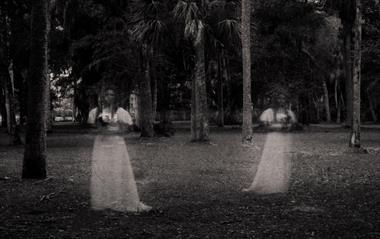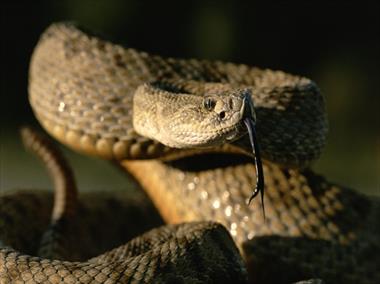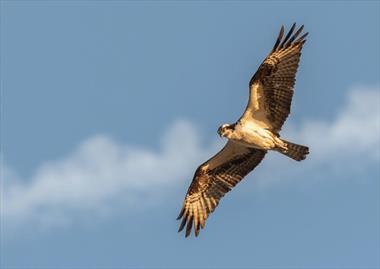Phong thủy bàn thờ đón Tết
We Asians, almost every family has an altar that is dedicated to gods and ancestors or at least to gods.
For modern architecture, it is always necessary to reserve a reasonable space for the altar because it is a spiritual corner of the Vietnamese people.
Arranging, arranging as well as taking care of the altar is both for descendants to show respect and remembrance of their ancestors, and the altar has a very important position in feng shui.
Every spring, year after Tet, preparing for the altar is everyone's top priority.
Feng shui lays down some basic principles for the altar:
Principle of "One taste, two directions":
The location of the altar must be a position with a solid fulcrum. It is best to have a separate room called a worship room, otherwise it can be arranged in the living room, living room, should not be arranged in the bedroom, dining room, kitchen. The altar should be quiet, not need to move, so it should not be placed near the intersections in the house, do not place the foot of the stairs, do not place above the window (no window is arranged behind the altar, no window is arranged under the altar). or doors). The altar does not place the main door straight, the window causes the wind to blow in, if there is a screen to block the wind...
In terms of specialized feng shui academics, "Vi" here is when the altar is placed at the sand bows of the Nine Palaces of Than Sat, such as: Yin Quy Nhan, Duong Quy Nhan, Thien Loc (if in the right Palace of Fortune). Loc residence (Loc is the way), Thien Ma. In which, Yin Quy Nhan is considered to be the place to place the altar of the great sand, followed by Duong Quy, then the second position of Loc, and then there are 16 palaces of Huyen not tracing the fortune (the palaces of Dien Tho, Fortune, and Death). . In the Bat Trach school, there is a saying: sand is seated, sand is towards the altar and is often misunderstood as "Vi". But in essence, the Primordial Qi rises from the ground, so it is the qi of the nine bows in the air field. Therefore, when considering the "position" of an object, we must consider the Qi of the Nine Palaces in the air field, not the "coordinate" in the Eight Airs as many Feng Shui experts often misunderstand. Because that "coordinate" is in essence still only in terms of Real Qi - Yang Qi. Real qi is the qi that floats on the ground and changes flexibly without stopping, so the School of Feng Shui takes the Eight Qi (Living Qi, Dien Nien, Thien Y, Restoration, Absolute Life, Luc Kill, Harm, Five Demons) to represent True Qi. Real qi must use the direction that is absorbed and at the same time it depends on the qi and body of the occupants. Those in the West of the Four Fates should use the direction of Tây Trach to receive the Sand Qi (Living Qi, Dien Nien, Thien Y, and Fu Vi) while those in the East Four Destiny should use the direction of the Dong Trach to receive the Sand Qi. or get good Qi. In terms of strength and weakness, Primordial Qi is stronger than True Qi but slows down.
The real energy is light but the action is fast.
The yang qi can absorb both qi, including yang qi - qi, so it works quickly, but yin qi - qi is the qi with the strongest interaction.
The ratio of the interaction of these two qi with the common Yang Co is: Yuan Qi accounts for 70% to 80%, and Qi only accounts for 20% to 30%. Therefore, the altar must be placed in the sand palaces of the above-mentioned Nine Palaces of Qi, at least must be located in the Real Qi Palace of the Innocent Qi (Medium Air Region).The direction of the altar is the direction of the straight line passing through the center and perpendicular to the surface of the altar, also known as the opposite direction to the person standing to burn incense. The direction of the altar should be arranged in the four sands: Sinh Qi, Thien Y, Dien Nien, and Phuc Vi.
-Principle of cleanliness to activate aerated sand:
The altar is the seat of the ancestors in the family, so it is often placed in the center and highest position in the house. This is not only to avoid collisions, but also to keep out wind, dust and insects. Cleaning the altar is the first job and is done carefully and meticulously. Brooms or altar towels must be used separately.. Altar cleaning water is usually used from clean water, more careful than using rain water (galactic water) or water cooked from betel leaves, Bodhi leaves to clean, In addition, we also use pounding wine to add fresh ginger to clean the ceiling. . Worshiping space is a sacred space in the family, where many emotional memories between generations are kept, so keeping the altar clean and cool not only shows care and respect. children's respect for grandparents and ancestors, but also care for the spiritual ego in each person. . From re-lighting the bronze sets, cleaning the picture frames, replacing the sand and incense bowls (incense)... all represent the need for harmony and close connection between the sentient world and the sacred spiritual world.
The arrangement of the altar on New Year's Day is favored by gentlemen, simply because it is more difficult. Moreover, the man is the head of the family, must represent the ancestor's residence to show respect. Keeping the old custom, every family still invites the oldest and best family member to make vows and burn incense to their ancestors on important days such as year-end, New Year's Eve, New Year's Eve, and good-bye...
- Principles of altar arrangement:
On the ancestral altar, in the middle place an incense bowl (symbolizing the stars) and on the incense bowl there is a pillar to place incense rings (symbolizing the cosmic axis), two other incense bowls are placed on the left and right side. create the posture of three talents; In the two outer corners there are always two oil lamps (or candles) representing the sun on the left and the moon on the right. When it is necessary to communicate with ancestors (sometimes requesting, sometimes repenting... people often light candles (oil lamps) and burn incense. All prayers follow the incense smoke rings to the ancestors.Offerings usually include a few sets of clothes, votive papers for the elderly, a few communal ones (small, low cups) and a pot of tea; A large fruit plate is placed in the center of the altar, a large vase of flowers and a pitcher of fine wine.
Around, we have more cakes and jams for balance and beauty.Note that on New Year's Day, there must be fresh flowers on the altar, and on weekdays, fake flowers are interspersed with fresh flowers. There are also flowers made of foil, metallic gold paper (one silver, one gold represents a yin and yang, yin and yang harmonize) to be used for a long time. For fresh flowers, Vietnamese people often use chrysanthemums, lilies, gladiolus, apricot flowers, and peach blossoms in offerings to ancestors on Tet...
When decorating, it is necessary to pay attention to the placement of gifts as well as the decoration of the altar on the left (left), right (right) sides, which should be equal if the altar has ancestor worship (toe billion, ancestor, high ancestor, ancestor, ancestor, ancestor, ancestor. , senior team examiner...)and worshiping aunts, uncles - young people (uncle, brothers, sisters...). In case there is only the sacred incense bowl (worshiping the gods: earthly, earth, and earth), according to the principle of left (Thanh Long), right (White Tiger), it means that the left side must be arranged higher than the right. Pay attention to the left and right review from the position from the altar looking out against the position of the person facing the prayer.
Around the morning of the thirtieth New Year, the arrangement of the Tet altar must be completed. Depending on the economic or cultural conditions of each region, on the altar there are more pairs of green watermelons, packs of cigarettes, pairs of banh chung or banh tet...Lighting for the altar on Tet holiday also begins on the thirtieth day. Some houses use large incense sticks or incense sticks that burn continuously for many days with many symbolic meanings such as the shining stars, the attentive care of their children and grandchildren...Smoke incense also creates a cozy atmosphere in the place of worship, connecting the emotions and happy wishes of everyone in a family. Incense used for Tet holiday is also usually incense with special aroma such as incense, incense, incense, jasmine, etc., which have very characteristic aroma for the people of the three regions in the North Central region. Male.
Decorate the five-fruit tray:
The five-fruit tray consists of 5 fruits with 5 different colors such as green banana, yellow grapefruit, red rose, white pear, orange tangerine symbolizing the five blessings: Longevity (long life and happiness always with you) - Phu Quy (wealth, high status, respected by others) - Khang Ninh (good health, peace of mind) - Good virtue (do good deeds, accumulate generous yin virtue) - Thien Chung (always have peace of mind for others). until you close your eyes.) The image of the five-fruit tray comes from the theory of the five elements: water - fire - wood - metal - earth, the elements that make up the universe and its operation. Each region has its own concept of the meaning of the five-fruit tray. Southerners have a way of reading syllables or simplifying some words, for example, if only the name of the custard apple is left, they call it Cau (custard: satisfaction in begging) - sung (Sung: indicating affluence. , full) - moderate (mispronounced as coconut: coconut) - enough (mononymous syllable of papaya and spent (is a misreading of mango sound).Meanwhile, people in the North tend to have more symbolic meaning, the Buddha's hand or bananas are like the Buddha's protective hand for everyone; grapefruit, watermelon represent fullness, fullness, full of vitality; The bright colors of tangerines and pink represent luck, prosperity and auspiciousness.Today, the fruit tray on the altar of the Vietnamese New Year is richer in variety because of the presence of imported fruits. With cultural integration, the Vietnamese can always find all the relevant and valuable elements for the spiritual life of their nation.The most beautiful products, the most quintessential, are presented with the most respectful, solemn and intimate feelings. The Tet altar is not only a place where people express their love for family and bloodline, but it's also a place where we send our best wishes for luck and a happier and more prosperous new year.
Taboos of the altar:
In order to have a really good feng shui environment, the arrangement of the altar needs to meet some of the following requirements:
- The altar must not look directly at the toilet door
- There is no toilet above the altar
- The altar must not lean against the toilet or the stove
- The altar should not be placed in the bedroom, especially the husband and wife's room.
- The altar is not placed on the land that encroaches on the space
- The altar is not placed in a place where there is a road
- The altar is not located on the upper floor, there are beds, tables and chairs, women's wardrobes
- The altar should not face the stairs directly, and should not be located at the foot of the stairs
- The altar must not be dark, the lights on the altar are always on to attract positive energy.
.- If the altar is displayed with fresh flowers, it will not let the flowers wilt or wither, do not display dried flowers, field flowers...
Nguyen Song Ha
Senior feng shui training specialist
Feng Shui expert Hoang Dien Feng Shui System



